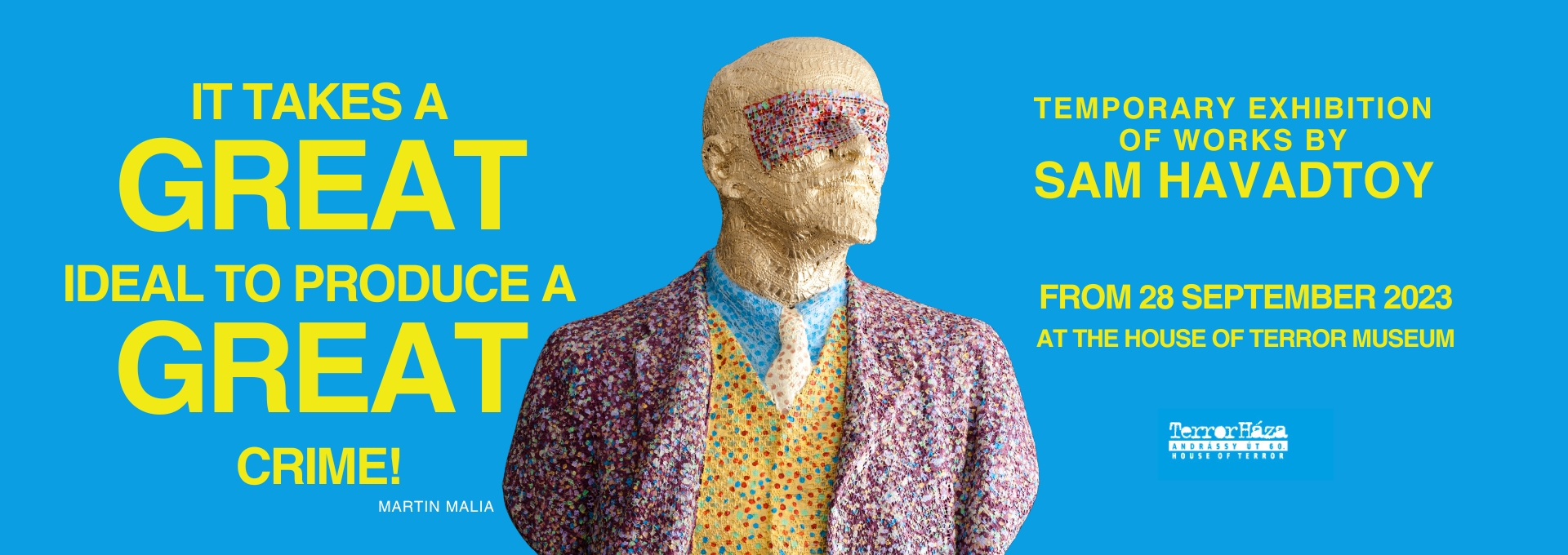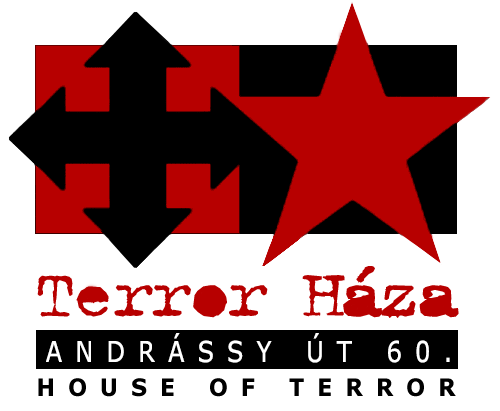The House of Terror Museum is hosting a temporary exhibition of the works of artist and painter Sam Havadtoy from 28 September 2023.

ABOUT THE BACKGROUND OF THE EXHIBITION
"Stalin’s era is a direct continuation of Lenin’s."
Alexandr Solzhenitsyn
In 1917, towards the end of World War I, the Russian Empire suffered an unexpected and total collapse. Riots in February led to the Tsar’s abdication and, as Russia’s army fought on the fronts, the sudden voiding of legitimacy at the apex of the state precipitated a steep descent. The country became ungovernable. In October the power vacuum was filled by the determined and power-hungry Bolsheviks. Their enterprise was later dubbed the “Great October Socialist Revolution”, and was promoted as an example for the world to follow. As it built socialism, for seven decades Soviet Russia – and later the Soviet Union – conducted an experiment in constructing a new society. From its first moment to its last, the Soviet model was a total dictatorship, its legitimacy derived from terror. The system of communist terror was based on exclusivity and unification: one ideal, one ideology, one culture, one political direction, one party, one leader, one control centre. The communists abolished private property and continually experimented with the abolition of the private sector. People who had been barred from and dishabituated to responsible decision-making were compressed into a mass party, forced into a mass culture and degraded into mass humans. Their traditional bonds were severed, and their traditions eradicated. The church was rendered superfluous, because instead of people being offered faith in God and happiness in the hereafter, they were offered heaven on earth. In a society atomised in this manner, no refuge remained for individuals who had been uprooted and made vulnerable to manipulation. They had to accept that the socialism they were forced into building day by day was itself the coveted goal, the realised utopia. In 1991 this utopia was buried under the collapsing Soviet empire. It was destroyed just as suddenly and unexpectedly as Tsarist Russia had been more than seventy years earlier. The Soviet Union is no more. Communism in our region has withered away, and its horrific memories are confined within the walls of this building. Thirty-two years on, we can say that we no longer need to fear the monstrous ideals of either Stalin or Lenin. We can sit back and laugh at them.
Someone who refused to erase the past
In 2013 a painting of Russian Tsar Nicholas II was discovered on the reverse of a portrait of Vladimir Ilyich Lenin, the leader of the 1917 revolution that overthrew the Tsar’s rule.
Read more about the paintings here.
SAM HAVADTOY’S LIFE AND CAREER
"The role of Eastern European dissident made me exotic..."
Sam Havadtoy
Sam Havadtoy (Sámuel Havadtőy) is a Hungarian-American interior designer, artist and painter.
Sam was born in London in 1952 to Hungarian parents. The family returned to their home country in 1956, before the Revolution, and stayed there after it had been crushed. He emigrated to England in 1971, but soon moved on to the United States, where he became a well-known figure in the New York art scene as an antiques dealer and interior designer. He worked with artist friends such as Andy Warhol and Keith Haring. For twenty years after John Lennon’s death, he lived with Lennon’s widow, Yoko Ono. Sam Havadtoy’s work is also well known in Hungary, where he has been the subject of several exhibitions over the past decade – from the Ludwig Museum in Budapest and the Ferenczy Museum in Szentendre to the Hungarian National Museum.
Considered by many to be an American, but self-identifying as Hungarian, he lives in Milan, Budapest and Szentendre.
SAM HAVADTOY ON HIS ART
“Lace is a symbol of life, simultaneously revealing and concealing.”
Sam Havadtoy
Sam Havadtoy’s art is defined by his dual identity: wild, brash and playful pop art mixed with the frustration of artists oppressed by communism. His art is identifiably personal, with almost intimate aspects, yet also subtle and decorative. He very sensitively combines Central European stylistic traits with American pop art. He defines himself primarily as a painter, treating objects in the same way as canvases, but in three dimensions. Lace is a material that is typical of him. He retains vivid childhood memories of little lace table mats – which he hated – distributed around his parents’ apartment. Yet as an interior designer he introduced the material into his work, and his clients loved this Hungarian novelty. He treats textiles as surfaces, cutting them up and incorporating the pieces into pictures and objects, sometimes twisting them into extreme forms. But he has also used lace to represent a death shroud.
THE EXHIBITION WAS CREATED BY
Curators:
Mária Schmidt
Rajmund Fekete
Graphic Design
Tamás Takács
Torter E-Design
DEAR VISITORS! PLEASE DO NOT TOUCH THE ARTWORKS!


